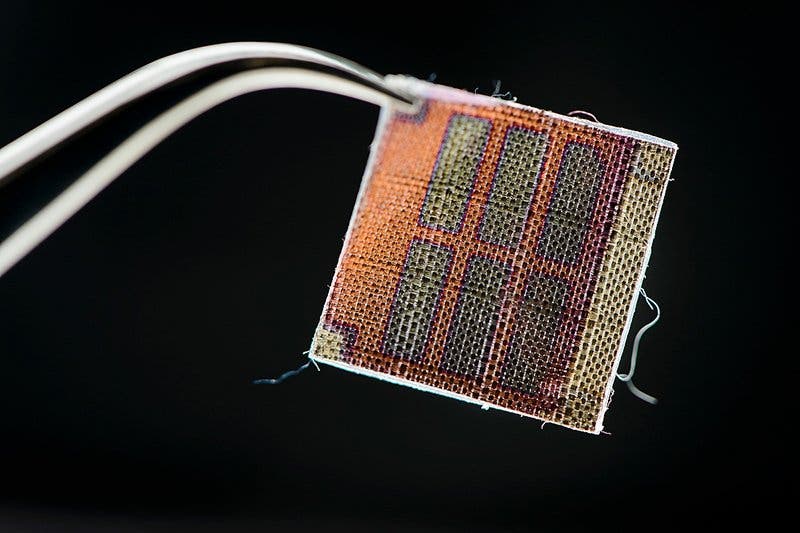
Marianne Fairbanks is a fabric designer who in 2010 briefly founded a company called Noon Solar that specialized in manufacturing solar-charged handbags. Not only would the handbags looked fashionable, but they would also generate electricity — enough to power a portable battery or mobile phone. Though the idea caught on for a while, but poor business eventually forced Fairbanks to seek other projects. The experience working at Noon Solar proved to be invaluable, though.
Connecting the dots
She eventually joined the University of Wisconsin-Madison as a professor at the school of human ecology, where Fairbanks would go on to meet Trisha Andrew, an assistant professor of organic chemistry.
Andrew had been experimenting at the time with an organic dye-based solar cell on paper, which definitely got Fairbanks excited. The two would eventually go on to collaborate and use their complementary skills to design an innovative solar harnessing unit — one you can wear on your clothes. Correction, one that makes up your clothes.
“The way that today’s wearable electronics are created is a simple process of packaging,” says Andrew. “A Fitbit or an Apple watch—they all have a PCB [printed circuit board], which holds the little electronic circuit. It allows you to ‘wear’ that device, but to me that’s not real wearable electronics. That’s only something that is patched onto another material.”
Textile solar cells aren’t exactly new. The first ones were made fifteen years ago, but what the two researchers at UWM claim their product is superior in terms of breathability, strength, and density.
Their solar cells are made up of one layer of fabric, which theoretically can be just about any material, and four coats of different polymers. The first coat is called Poly(3,4-ethylenedioxythiophene), or “PEDOT”, which works to increase the fabric’s conductivity. The other three are semiconducting dyes that act like light absorbers for the cell. To evenly distribute their coatings, the researchers used Chemical Vapor Deposition (CVD).
Various fabrics were tested for the substrate from silk to wool to nylon. Some would absorb sunlight and keep it there as heat. Other fabrics dispensed the heat, but conducted electrons.
“The conductivity of the PEDOT was completely determined by the underlying textiles,” adds Andrew. “If we had a porous textile, we got conductivity higher than the copper. If we had a very fuzzy textile, like fuzzy cotton jersey or wool felt, or very tightly woven textiles, then the conductivity of the PEDOT was really bad.”
The first commercial item the duo completed so far is a glove made from pineapple fiber, which is very conductive and absorbs heat, and cotton, which traps heat between the layers.

What they’re currently working on now sounds more interesting, though. Andrew and Fairbanks are experimenting with coating each individual textile fiber with PEDOT so they can weave them and form a working circuit. The completed fabric then works like a triboelectric generator which translates mechanical motion into electricity. Various 10-by-10-inch swatches have been demoed, the most efficient of which can generate 400 milliwatts of power.
“If you actually made a standard curtain for a house, something 4-by-4-feet, then that is more than enough power to charge your smartphone,” says Andrew,
“I get really excited, because textiles are portable and lightweight,” says Fairbanks. “They could be deployed in the wilderness for a hunter or in the field for medical or military applications in a way that big clunky solar panels never could be.”


